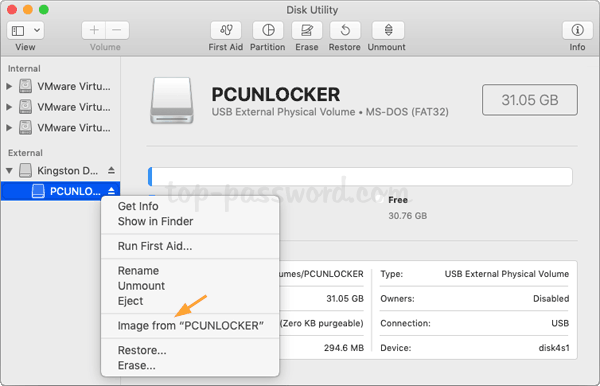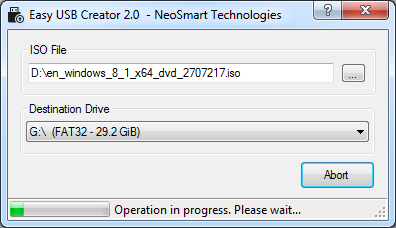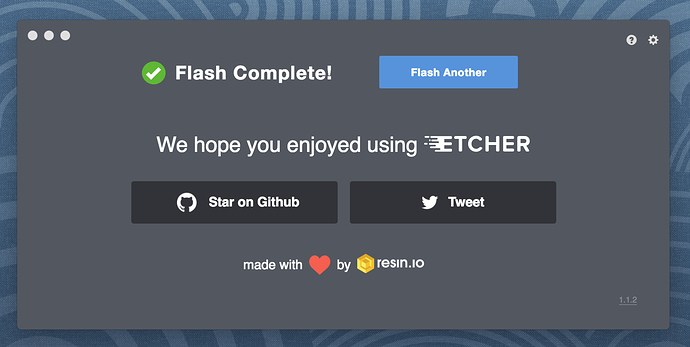Create Bootable Usb For Mac From Iso
- Mac Create Bootable Usb From Iso Windows 10
- Create Bootable Usb For Mac From Iso Bootable
- Windows Bootable Usb On Mac
- Create Bootable Usb For Mac From Iso Flash Drive
- Create Bootable Usb From Iso Mac Mojave
- Products ▼
- For Windows
- Android Manager for Win
- Android Data Recovery
- Phone Transfer for Win
- Android Root Pro
- For Mac
- Android Manager for Mac
- Android Data Recovery Mac
- Phone Transfer for Mac
- More >>>
Creating a bootable drive from an ISO file (disk image) allows you to do a lot of things, including installing an OS and helping you execute system repairs. However, specialized software is required to make sure that the boot information is copied along with the other files and folders in order to make it bootable. If you want to create a bootable USB drive from an ISO file, the following utilities are recommended. These tools each work on Windows, Mac and Linux computers, respectively. Choose the tool based on what platform you intend to create the bootable drive on.
Download the Windows 10 ISO file. You can download the ISO file straight from Windows.
- How to create a bootable macOS Catalina installer drive Put the macOS Catalina installer on an external USB thumb drive or hard drive and use it to install the operating system on a Mac.
- Jan 09, 2018 Method #1: Create Windows 10 Bootable USB/DVD on Mac Using Disk Utility. Instead of trying out with an external agent, it would be better to make use of the in-built application of Mac, called Disk Utility to burn the ISO image files on disk to make them bootable.
Part 1: How to Create Bootable USB fro ISO (Windows 10/8/7)
Androidphonesoft ISO Burner can help you create a bootable USB drive from an ISO file quickly and without any errors. Trusted by millions of Windows users around the world, this intuitive software is not just for the experts. Even with limited knowledge of ISO files, you can easily turn your USB stick into a bootable drive in minutes.
The software's UI is clean and simple to understand, but don't be fooled by looks. It integrates extremely well with multiple file systems and supports a wide range of Windows versions, going from Windows XP all the way up to Windows 10. The best part is that user input is minimal because the software does all the hard work for you. No wonder it has such a huge fan following.

Step 1: Download the official version of ISO Burner from this website. Double click the .exe file and follow the instructions on the setup wizard to install the software on your Windows PC.
Step 2: As you will see, there are multiple functions to handle ISO disk images. Click on the one to create a boot disk from ISO file. It's the option that says 'Burn'.
Step 3: On the next window, which is a single-page interface, select your ISO source file and the destination drive, which is your USB flash drive. Leave all other default settings as they are if you're unsure, and click on the 'Burn' button. In a few moments, your bootable USB drive will be ready for use.
The software contains a lot of functionalities to make sure that your ISO file is burned properly to the drive, including ISO burning, creation, editing and extracting. A lot of effort has been taken to put all the heavy work in the background so the user has a lot less work to do.
Part 2: How to Make Bootable USB Flash Drive from ISO (Mac)

Etcher is a great tool to create a bootable drive on computers running Mac OS. There are some initial preparatory steps that you will need to execute before actually creating the boot drive from your ISO file. In this example, we will show you how to create an Ubuntu boot drive on Mac OS.
Step 1 : Install the Etcher software on your Mac computer after downloading it from the official source. You will also need to download a copy of the Ubuntu OS. You can get that here.
Step 2: You now have to prepare the USB stick by erasing whatever is already saved on it. If required, you can copy these files to your Mac computer as a backup. First, go to applications and utilities and click on 'Disk Utility' to launch it. Now insert the USB flash drive into one of your computer's USB ports. Once the device has been automatically detected, set the format as MS-DOS(FAT). The scheme should be set to GUID Partition Map. Finally, click on 'Erase'. While doing this, make sure that your USB flash drive has been selected in Disk Utility, or you may end up erasing another drive by mistake.
Step 3: Since you have already installed Etcher, you can now directly launch the software. If the software is blocked at installation time, go to System Preferences and then Security & Privacy. Here, click on the '‘Open Anyway' button next to the notification message in the bottom half of the window.
Step 4: In the Etcher interface, select the disk image, which is the Ubuntu ISO file that you downloaded earlier, then select the drive, which is your USB flash drive. Finally, click on 'Flash' and then enter the password for your computer to proceed with creating the boot drive.
Your bootable USB drive will soon be ready. You will now be able to use this USB stick to install a new OS on any desktop. The steps for using this software are fairly simple, but you have to be careful to take a backup of your USB data and make sure that you select the appropriate ISO image and the drive while flashing it.
Part 3: How to Make Bootable USB from ISO (Linux & Unix)
UNetbootin will let you create what is called a bootable Live USB drive. Essentially, this is an alternative to burning a boot disk on CD or DVD. It can be used for Ubuntu as well as other distributions of Linux such as Fedora, Gentoo, FreeDOS and several others.
Step 1: Download and install UNetbootin, and launch the application.
Step 2: If you do not have the ISO file for whichever Linux distribution you need, the software can do it for you. Assuming you already have the ISO file that you need, select the radio button against ‘Disk Image'. The dropdown should be set to ISO, and you can select the source file by clicking on the Ellipsis (..) button.
Step 3: Next, select the type of drive, which will be USB drive, and the appropriate drive name from the two dropdown menus at the bottom of the window. Once everything has been set up properly, click on '‘Ok' to initiate the creation of the bootable USB drive. You will be shown the progress in a stepwise manner. Once it is complete, you may remove your USB drive after ejecting it from the Finder window.
Conclusion:
Depending on what operating system your computer is running, you can use one of these fantastic disk image tools to create a bootable USB drive from ISO file. All of them are quite popular with users of the respective platforms.

Related Articles
- Windows 10 Password Crack | Remove Windows Admin Password | Change Windows Password | Bootable Windows USB | ISO to USB Tool | Create Windows Reset Disk | Burn ISO to CD | Create Windows Reset Disk | More>>>


Booting from a USB stick is nowadays more and more important. More and more PCs (and servers) are delivered by default without a CD/DVD drive. To install the OS of your choice, USB sticks provide you the easiest possibility. In fact, it can even work out cheaper than burning a CD or DVD that you just throw away once the version is outdated.
For most Linux distributions the ISO for burning a CD/DVD is available freely on the internet. In this post I’ll assume you have already downloaded the bootable ISO image for the OS of your choice, but how to get the ISO image onto the USB stick?
The ISO file you have downloaded contains an image of the entire media. It includes all the files necessary to boot your PC/server. This image format is sadly not directly usable to copy onto the USB stick. We first need to convert the image from an ISO to a UDRW (Read/Write Universal Disk Image Format) which we can copy to the USB stick.
Some of the steps to create a bootable USB stick could be done in the GUI as well, but as some of them can’t and you have to go to the shell anyway, I decided to do all of the steps in the shell.
Convert the ISO to UDRW format
Mac OS X provides all the tools needed to convert the ISO image to UDRW. The following command will convert the ISO image to the UDRW format.
You will notice that the destination_file.img from the command will create the file destination_file.img.dmg really. This is because the hdiutil program automatically adds the dmg file extension. This is not a problem as the file extension won’t affect the format of the image.
Prepare the USB stick
Check your USB stick and make a backup if there is any important data on it, as the next steps are going to delete everything on it.
To prepare the USb stick we are going to delete all the partitions on the stick and create an empty partition. To do this we need to know the device name of the USB stick. Open a terminal and execute the following command:
Mac Create Bootable Usb From Iso Windows 10
You will see a list of disks and partitions. The goal is to identify the USB stick in this output. Depending on your system configuration your output might look different from this one. Photoscape x for mac. This appears to show 3 physical discs but it does not. The /dev/disk1 is a virtual disk created because of the partition encryption (FileVault 2) I enabled in Mac OS X.
As shown in the output above, the connected USB stick is a small 2.0 GB drive with a FAT partition on it. We are now going to remove this partition in the next step. For the following steps we will need the name of the disk which in this case is “/dev/disk2”.
With the following command the data on the disk (your USB stick) will be deleted!
With this command the USB stick was re-partitioned to have 1 partition without formatting and 100% of the size of the stick. If you check it again with “diskutil list” you will see the changes already, also the USB stick will no longer be shown in the Finder.
Create Bootable Usb For Mac From Iso Bootable
Copy the image to the USB stick
Windows Bootable Usb On Mac
Now we can copy the disk image we created to the USB stick. This is done via the dd(1) command. This command will copy the image to the disk (substitute the appropriate disk name for your USB stick here, as with the re-partitioning command):
The dd command does not show any output before it has finished the copy process, so be patient and wait for it to complete.
To eject the USB stick, use the above command. After this is done, the bootable USB stick is ready to be used.
Create Bootable Usb For Mac From Iso Flash Drive
Read more of my posts on my blog at https://blog.tinned-software.net/. Securityspy for mac.
Create Bootable Usb From Iso Mac Mojave
Related posts:
